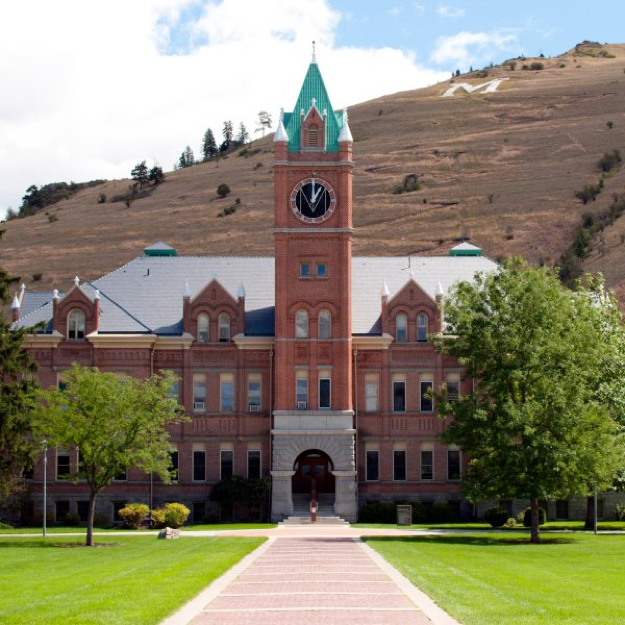
The University of Montana’s School of Journalism, established in 1914, is one of the oldest accredited journalism programs in America. My mother was one of its first female graduates in 1928, and though she never worked as a journalist she inspired me to be a writer and would be proud to know her granddaughter is a mid-career writer, editor, and freelance journalist.
It’s not surprising then that we, as a family, are staunch supporters of the First Amendment and its important role in maintaining a free and open society. Unfortunately, our current president, thin-skinned and notably ignorant of the country’s founding principles and documents, views the press as “the enemy of the people.”
Journalists and other writers are and have always been the social and political conscience of the people – not the enemy. Americans may be unfamiliar with the term Fourth Estate, but it’s common in other democracies and derives historically from journalism’s role as a check on the three traditional estates of the realm – the clergy, the nobility, and the commoners (Wikipedia).
Today’s Fourth Estate, news media, acts as an informal agency to monitor and report back to the people on the executive, legislative, and judicial branches of government. It is society’s conscience, the guardrail that keeps government from overstepping its bounds and its officials accountable… especially in troubling times like these.
That’s why I was devastated to hear that the Newseum, a Washington D.C. museum built to celebrate journalism and honor its practitioners, was closing its doors on New Year’s Eve 2019. Words, the tools of the trade in journalism and so important in the defense of liberty, are wholly inadequate to express my upset.
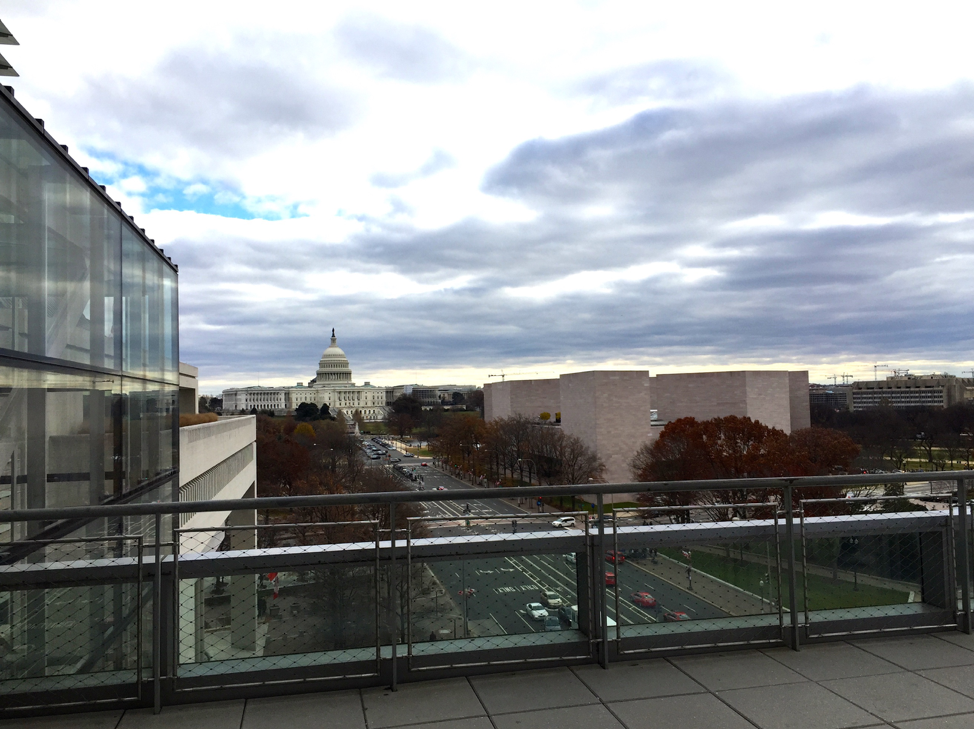
Only a year ago, M and I spent most of a day at the Newseum where I took this picture of the US Capitol from its outside walkway. Originally located across the river in Rosslyn, Virginia, in 2008 it was relocated to D.C.’s Pennsylvania Avenue at a cost of $450 million. From the beginning, it was an ambitious but under-financed project competing for visitors with 15 free museums a block away on the National Mall. A private institution with an adult admission of $25, the price was beyond the reach of many visitors. When it became clear that its operational costs were unsustainable the trustees sold the building to Johns Hopkins University.
While there were many exhibits at the Newseum, from sections of the Berlin Wall to live feeds from 80 international newspapers, I think the Journalists Memorial was the most striking and memorable. Covering a floor to ceiling wall and composed of the photographs of 2344 reporters, photographers, and broadcasters who died reporting the news, it spoke dramatically of the courage, responsibility, and danger associated with the profession.
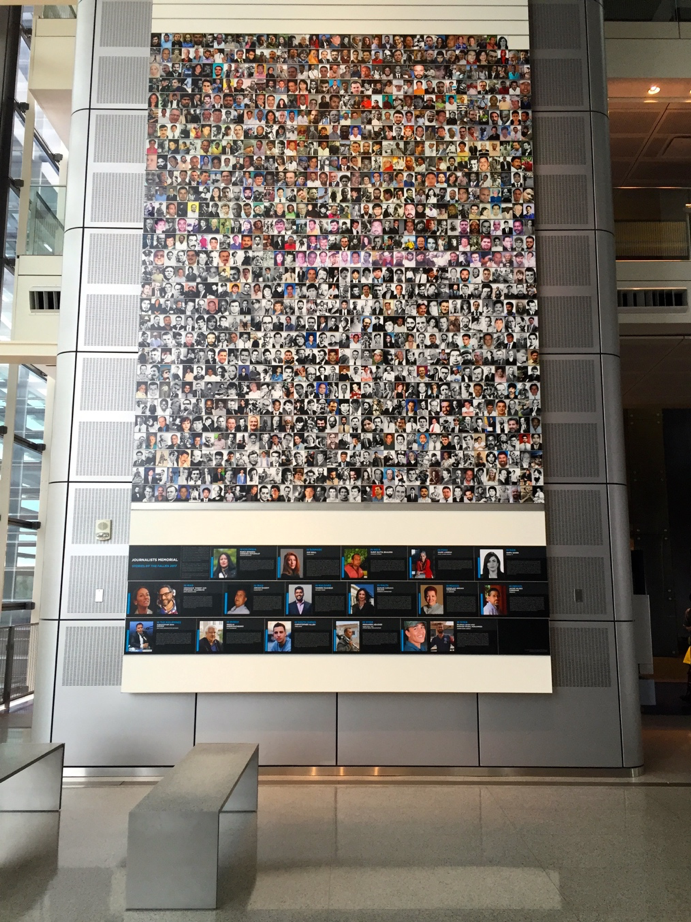
The Fourth Estate is vital and active but under attack – and not just from Mr. Trump. News delivery is changing. More than 1 in 5 newspapers have closed since 2004. Newspapers can’t compete with Breaking News on the Internet. Traditional network news is losing ground to a variety of opinion-based cable channels. Investigative reporters fact check their stories and reveal the truth, but consumers find it increasingly difficult to distinguish reliable sources from bots and trolls.
At every campaign rally, Mr. Trump rails against the press, often threatening journalists and calling them out by name. In this era of extreme political division, with rage and unparalleled access to firearms, his provocations call for increasing vigilance.
We need the Newseum. We need a monument to the Fourth Estate, a substantial brick and mortar testament to journalism’s role in a civil society. Along with the Holocaust and African American museums on the Mall, the Newseum reminds us that our freedoms are not free.
The Newseum trustees are looking for a new location. It may not be as grand as the one they are leaving, but let’s hope they find one soon to honor the men and women who educate, inform, and prepare us for our role as citizens.
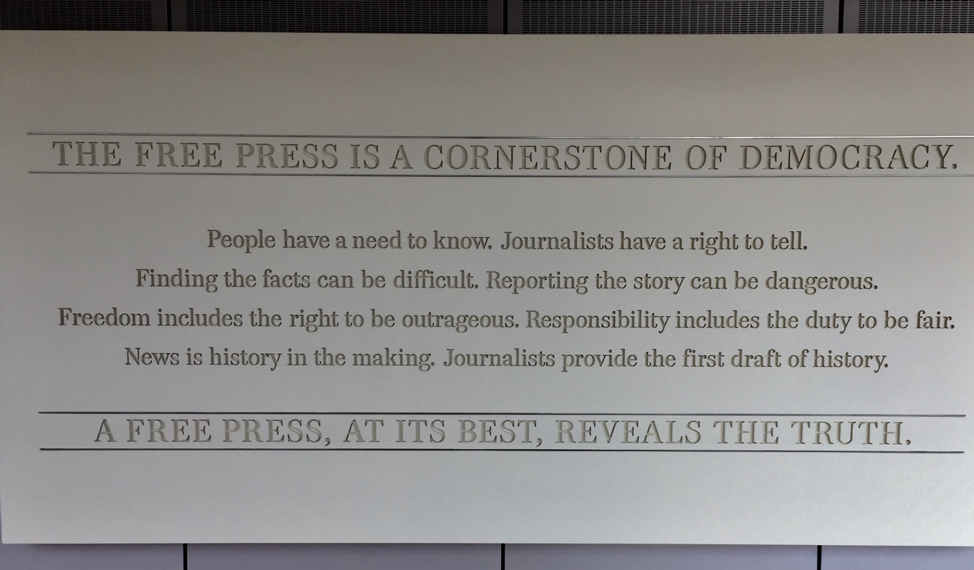
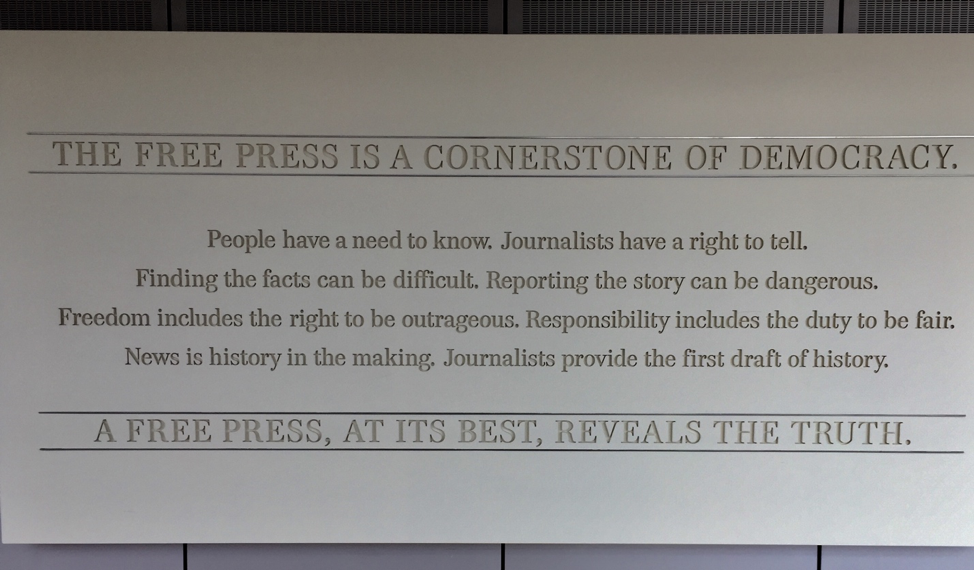
































I am surprised that after creating such an amazing museum that something could not be done to save it. It should have been folded into the Smithsonian.